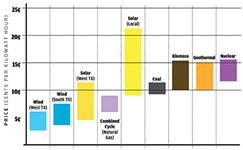Density Bonus Program 'Interim' No More
Council takes wait-and-see approach
By Elizabeth Pagano, Fri., July 5, 2013

After five years, the city of Austin's "interim density bonus program" – essentially voluntary for developers – is no more. Central Urban Redevelopment (CURE) district rezoning – the prevailing developer workaround – is also no more. At long last, Austin has a density bonus program (effective July 8) intended to actually capture some of the development money flowing into Downtown and direct it towards the city's poorest residents.
A long time coming, codification of a streamlined Density Bonus Program moved, once kickstarted, with a swiftness seldom seen in city government. Details that usually bog down city processes were dodged in favor of getting an ordinance into place that, in theory, would capture some of the development money generated by the more than 5.3 million square feet of "bonus" area that has been granted through Downtown zoning changes (mostly via CURE) since 2000.
In March, Council asked for the density bonus program portion of the 2011 Downtown Austin Plan to be codified posthaste, and last Thursday, the plan was put in place with unanimous support (Council Member Bill Spelman was out of town, but his support had been solid.)
Though there were several speakers at the meeting, for once no one was urging the city to slow down and take a closer look at the issue. Instead, there was a general feeling that the city should just move forward and work out the kinks later.
Heather Way, who is a member of both the Housing Works policy committee and the Downtown Commission, took to the podium with a framed picture of her child, using his eight years to benchmark the plodding process that started when he was just a baby. "Never before has an issue been more thoroughly studied and vetted in this community," said Way. "[People] will argue today that the fee is too low, and some people are saying it's too high, but I implore you, let's take the staff recommendations and adopt the ordinance today."
In actuality, there was little late-game quibbling about the fees themselves. Though the usual fears surfaced (e.g., from spokespersons for the Real Estate Council) about hindering development with over-ambitious fees, vs. letting development run amok with fees that are too low (from some housing advocates), a consensus emerged to take a wait-and-see approach and rely on the recommendations of staff and consultants.
Under the ordinance, Downtown residential projects desiring a rezoning must dedicate half of their "bonus" area (the area gained by the rezoning) to affordable housing community benefits. This can be either on-site affordable housing (rental units for households earning below 80% Median Family Income, which must remain affordable for 40 years, or owned units for households earning below 120% MFI, which must remain affordable for 99 years), or fees-in-lieu – acknowledged to be a more popular option for developers – of between $3 and $10 per square foot, depending on location.
These fees would be paid into the city's Housing Trust Fund. Many of the people who spoke advocated for the fees to be applied towards permanent supportive housing for the chronically homeless, and Council agreed to make that a priority, though they also decided to re-evaluate that priority in three years, along with the entire program. In fact, the only substantive change Council ended up making was accepting the Planning Commission's recommendation to evaluate fees and funding priorities every three years, instead of five.
At that same time, they will also re-evaluate a slightly more controversial choice to exclude buildings other than residential from the program (this means no fees for upzoning hotels and office buildings).
Which is to say: If you somehow missed the eight years of discussion about fees-in-lieu, median family incomes, and the density bonus program, fear not. The program may be in place – but the debate promises to continue for years to come.
Got something to say on the subject? Send a letter to the editor.










